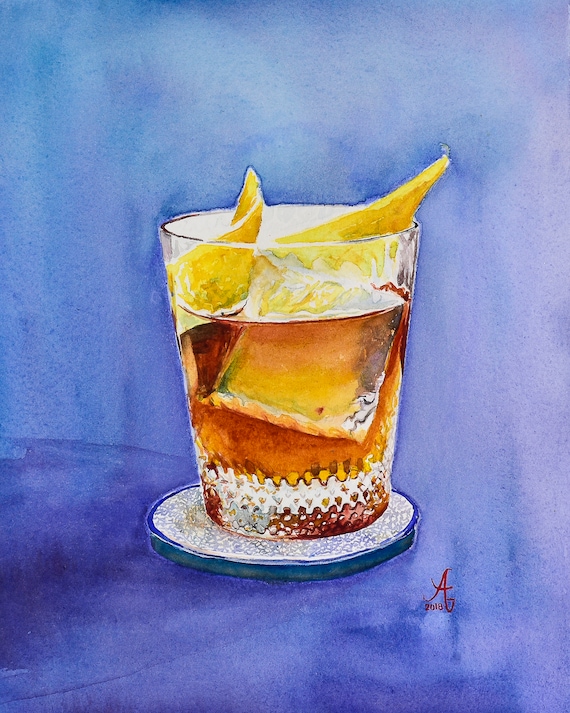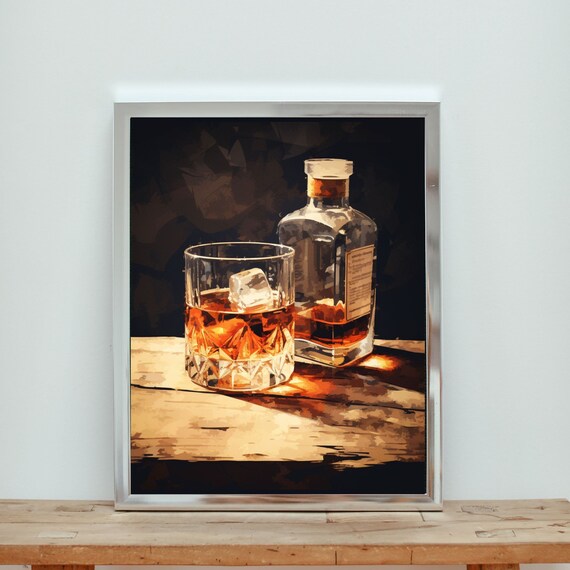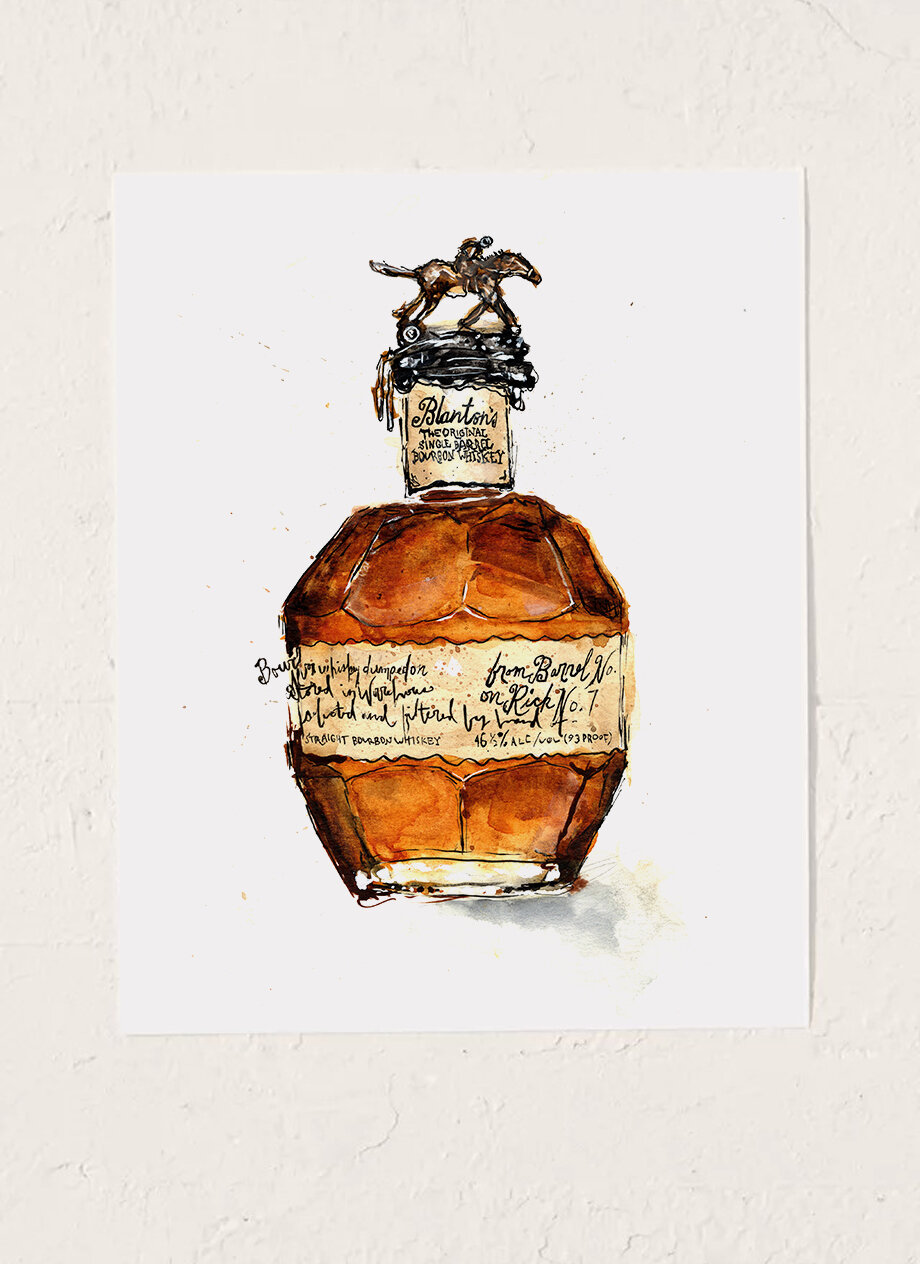Bourbon Art in Contemporary Society: Where Custom Fulfills Advancement
Bourbon Art in Contemporary Society: Where Custom Fulfills Advancement
Blog Article
The Relevance of Whiskey Art in Celebrating Heritage and Craftsmanship in the Beverage Industry
The detailed partnership in between scotch art and the celebration of heritage and craftsmanship within the beverage market can not be overemphasized. Through attentively developed labels and containers, bourbon brand names envelop their historic roots and the artisanal skills that specify their manufacturing techniques.
The Historical Origins of Whiskey
At the heart of scotch's attraction lies an abundant tapestry of historical origins that map back to old human beings. The origins of bourbon can be linked to the purification techniques of the Sumerians and Babylonians around 2000 BCE, where very early kinds of fermented grain drinks began to arise. It was in the Center Ages that the art of distillation developed considerably, especially in Ireland and Scotland, leading to the production of scotch as we recognize it today.
The term "whiskey" itself originates from the Gaelic word "uisce beatha," indicating "water of life." This phrase highlights the cultural value of bourbon in Celtic societies, where it was commonly associated with rituals, events, and common bonding. By the 15th century, purification became an identified craft within monastic neighborhoods, leading the way for the facility of lawful distilleries.
As profession paths expanded, scotch's popularity grew, going beyond local limits and recording the interest of lovers worldwide. Realism Art. This historic journey mirrors not only the craftsmanship behind bourbon production but likewise its essential function in social and social contexts, noting it as a considerable beverage throughout background
Artistic Expression in Branding
Whiskey branding stands as an engaging intersection of artistry and commerce, where aesthetic identity plays a vital role in forming customer assumption. The appearances of bourbon tags, packaging, and advertising products show not only the brand name's story but likewise its core values and heritage. Through imaginative expression, distilleries share a story that resonates with customers, stimulating feelings and sparking connections.
The use of shade, typography, and images in branding offers to set apart items in a saturated market. Standard motifs may stimulate a sense of authenticity and workmanship, while modern layouts can indicate technology and forward-thinking. This calculated artistic direction enhances brand recognition and loyalty, permitting customers to create a personal connection with the scotch they select.
In addition, imaginative expression in branding usually acts as a party of regional heritage. Distilleries frequently integrate local symbols or historic references right into their styles, creating a local color that welcomes customers to participate in a broader cultural experience. Ultimately, the artistry behind scotch branding not just improves visual appeal however also improves the total story of the brand, fostering a deeper appreciation for the workmanship and heritage embedded in each container.
Workmanship in Container Layout
The virtuosity apparent in scotch branding prolongs beyond visual identification to incorporate the craftsmanship associated with container design. Each container works as a vessel not simply for the spirit within, but also for the tale it outlines its high quality, origin, and practice. The design process calls for thorough interest to detail, as components such as closure, product, and form add dramatically to the overall assumption of the scotch.
Craftsmanship in bottle design involves selecting top quality glass that can improve the bourbon's color and clearness, while additionally giving a responsive experience for the consumer. The shape of the bottle must be both functional and visually appealing, commonly reflecting the heritage of the brand name. Numerous distilleries choose unique forms or printed logo designs that stimulate a sense of authenticity and history.
Additionally, the label layout and typography play a critical duty click this in communicating the brand name's story. Whiskey Art. A well-crafted container not only mesmerizes the customer's eye yet also enhances the brand's dedication to high quality and tradition. In this means, the workmanship of container layout comes to be a crucial facet of the whiskey experience, combining creativity with an extensive regard for heritage
Cultural Relevance of Scotch Art
Celebrating tradition and workmanship, the cultural importance of bourbon art transcends simple aesthetic appeals, linking with the social and historical stories of the areas from which it originates. Each bottle acts as a canvas, portraying the special stories, mythology, and practices that have actually shaped local whiskey-making techniques. The complex layouts usually mirror the heritage of the distillers, integrating icons and themes that resonate with the culture and worths of their neighborhoods.

On top of that, scotch art plays a crucial duty in common gatherings and celebrations, functioning as a tangible link between individuals and their shared experiences. By valuing the artistry in bourbon packaging, consumers cultivate a deeper understanding and respect for the craft, ultimately enriching their satisfaction of the beverage itself.
Modern Trends in Scotch Presentation
In recent times, the presentation of scotch has advanced to show contemporary preferences and patterns while still honoring conventional workmanship - Bourbon Art. Distilleries are significantly concentrating on aesthetic elements that boost the overall drinking experience, linking the gap in between heritage and modernity
Innovative bottle styles have arised, typically including lasting materials and creative labels that inform engaging Discover More Here stories. Many brands currently team up with local musicians, infusing their items with one-of-a-kind aesthetic expressions that resonate with customers. In addition, limited-edition releases are often packaged in collectible containers, adding value and allure for aficionados.

Verdict
In final thought, bourbon art works as a vital conduit for expressing the heritage and workmanship inherent in the beverage market. Through detailed branding, innovative container layouts, and culturally substantial artistic elements, scotch brand names successfully honor their practices and get in touch with consumers. This creative narrative not just boosts the appreciation of scotch yet likewise reinforces neighborhood identity and satisfaction amongst producers. Ultimately, bourbon art plays an essential function in preserving and celebrating the rich cultural tapestry of whiskey-making.


Craftsmanship in container design involves selecting high-grade glass that can boost the whiskey's shade and clearness, while likewise offering a responsive experience for the consumer. In this means, the craftsmanship of container style comes to be a crucial aspect of the whiskey experience, combining artistry with an extensive respect for heritage.
In conclusion, whiskey art serves as a vital channel for sharing the heritage and craftsmanship intrinsic in the drink sector.
Report this page